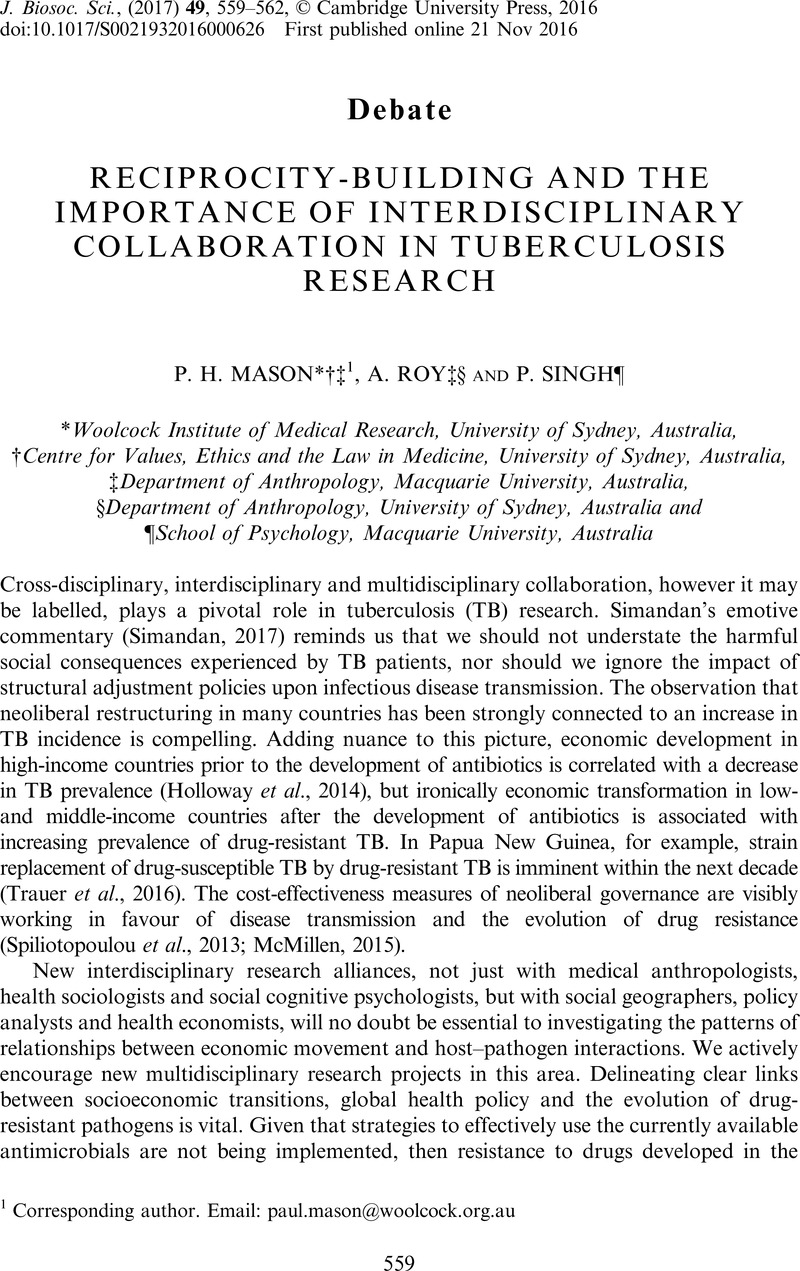Crossref Citations
This article has been cited by the following publications. This list is generated based on data provided by Crossref.
Simandan, Dragos
2017.
WISDOM AND THE PATH-DEPENDENT POLITICS OF BIOMEDICAL RESEARCH.
Journal of Biosocial Science,
Vol. 49,
Issue. 4,
p.
563.
Zvonareva, Olga
van Bergen, Willemien
Kabanets, Nadezhda
Alliluyev, Aleksander
and
Filinyuk, Olga
2019.
EXPERIENCING SYNDEMIC: DISENTANGLING THE BIOSOCIAL COMPLEXITY OF TUBERCULOSIS THROUGH QUALITATIVE RESEARCH.
Journal of Biosocial Science,
Vol. 51,
Issue. 3,
p.
403.
Boulanger, Renaud F.
Komparic, Ana
Dawson, Angus
Upshur, Ross E. G.
and
Silva, Diego S.
2020.
Developing and Implementing new TB Technologies: Key Informants’ Perspectives on the Ethical Challenges.
Journal of Bioethical Inquiry,
Vol. 17,
Issue. 1,
p.
65.
Adam, Nathan
Pallikadavath, Saseendran
Cerasuolo, Marianna
and
Amos, Mark
2021.
Investigating the risk factors for contraction and diagnosis of human tuberculosis in Indonesia using data from the fifth wave of RAND’s Indonesian Family Life Survey (IFLS-5).
Journal of Biosocial Science,
Vol. 53,
Issue. 4,
p.
577.
2023.
Bioethics of Displacement and Its Implications.
p.
164.



